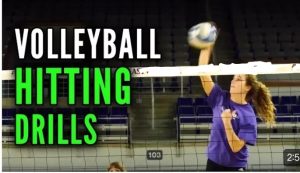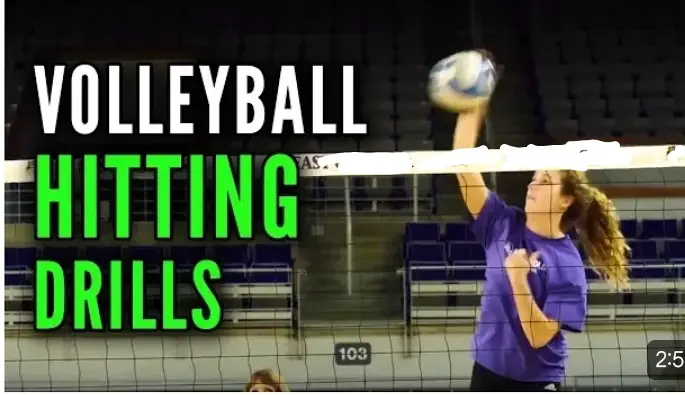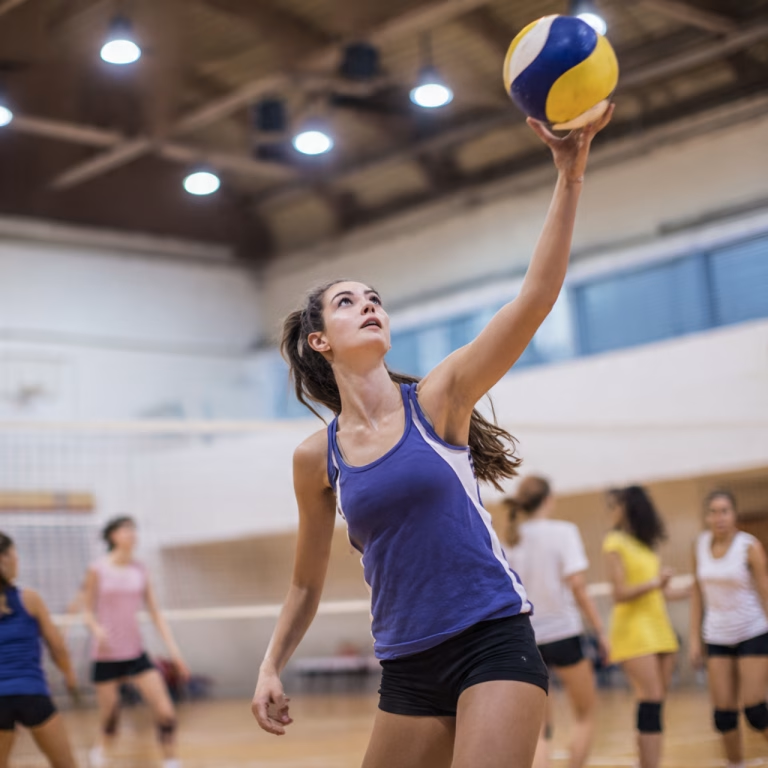Volleyball is a sport that demands a combination of agility, power, and precision. Among the various skills required, hitting or spiking is arguably one of the most exhilarating and game-changing aspects.
A well-executed spike can turn the tide of a match, leaving the opposing team scrambling to defend. However, developing spiking power is no easy feat; it requires dedication, proper technique, and targeted training.
In this comprehensive guide, we’ll look into the world of volleyball hitting drills, exploring various exercises and techniques designed to enhance your spiking prowess.
Whether you’re a seasoned player looking to take your game to new heights or a budding athlete eager to master the art of spiking, this article will provide you with the tools and insights you need to know.

The Importance of Hitting or Spiking Drills
Before we look into the drills, let’s first understand why spiking drills is so crucial in volleyball. A hitting or spiking drills can be the difference between a resounding point and a missed opportunity. It’s a skill that can demoralize your opponents and instill confidence in your team. Moreover, a well-placed spike can be challenging to defend, leaving the opposing team scrambling to keep the ball in play.
Hitting skills is not just about brute force; it’s a combination of technique, timing, and explosive movement. By mastering the art of spiking, you’ll not only increase your chances of scoring points but also become a more well-rounded and formidable player on the court.
Arm Swing Drills – Volleyball Hitting Drills
One of the fundamental components of a hitting or spiking drills is the arm swing. A proper arm swing not only generates power but also ensures accuracy and control.
Volleyball Arm Swing Drills – YouTube
Here are some drills to help you develop a strong and efficient arm swing:
1. Wall Drill
Stand a few feet away from a wall and practice your arm swing motion, focusing on the proper technique. Ensure that your arm is fully extended and your wrist is snapped at the end of the swing. Repeat this motion several times, gradually increasing the speed and intensity.
2. Medicine Ball Drill

Grab a medicine ball and practice your arm swing while throwing the ball against a wall or to a partner. This drill helps you develop explosive power and coordination in your arm swing.
3. Resistance Band Drill

Attach a resistance band to a sturdy object and hold the other end with your hitting arm. Practice your arm swing motion against the resistance of the band. This drill helps build strength and power in your swing.
Approach and Jump Drills – Volleyball Hitting Drills
A powerful spike is not just about the arm swing; it’s also about the approach and jump. These drills will help you develop the necessary footwork, timing, and vertical leap for a devastating spike.
1. Approach Footwork Drill
Set up cones or markers on the court to simulate the approach pattern. Practice your footwork, focusing on the proper stride length and rhythm. Incorporate arm swings to mimic the full spiking motion.
2. Box Jump Drill
Stand in front of a sturdy box or platform and practice jumping onto it with both feet. This drill helps improve your vertical leap and explosive power.
3. Timed Jump Drill
Set up a target or marker at a specific height, and practice jumping to reach it. Gradually increase the height of the target to challenge yourself and improve your vertical leap.
Game-Situation Drills – Volleyball Hitting Drills
While isolated drills are essential for developing specific skills, it’s also crucial to practice spiking in game-like situations. These drills will help you integrate your spiking power into real-world scenarios and improve your overall court awareness and decision-making.
1. Pepper Drill
Set up a small group of players and practice hitting the ball back and forth, incorporating spiking motions. This drill helps you develop timing, coordination, and the ability to spike under pressure.
2. Serve and Spike Drill
Have a teammate serve the ball to you, and practice spiking it over the net. This drill simulates game situations and helps you develop the ability to spike from different positions on the court.
3. Competitive Drill
Divide your team into two groups and set up a mini-game scenario. Focus on executing powerful spikes and scoring points. This drill helps you develop a competitive mindset and apply your spiking skills in a game-like environment.
FAQs
What is the proper technique for a powerful spike?
A powerful spike involves a combination of factors, including a strong approach, a vertical jump, a proper arm swing, and a snapped wrist at the point of contact. Proper technique ensures that you transfer your momentum and power effectively into the ball, resulting in a devastating spike.
How can I improve my vertical leap for spiking?
Improving your vertical leap requires a combination of strength training, plyometric exercises, and specific jump training drills. Exercises like squats, lunges, and calf raises can help build lower body strength, while plyometric drills like box jumps and depth jumps can improve explosive power and vertical leap.
How often should I practice spiking drills?
The frequency of spiking drills depends on your skill level and training goals. As a general guideline, it’s recommended to incorporate spiking drills into your regular practice routine, at least 2-3 times per week. However, it’s essential to balance these drills with other aspects of volleyball training, such as passing, setting, and defensive drills.
Can spiking drills help prevent injuries?
Yes, spiking drills can help prevent injuries by improving your overall strength, power, and technique. Proper form and gradual progression in these drills can help reduce the risk of overuse injuries and ensure that you’re putting the appropriate stress on your muscles and joints. Additionally, incorporating core and stability exercises into your training routine can further enhance injury prevention.
How can I incorporate spiking drills into my warm-up routine?
Incorporating spiking drills into your warm-up routine can be an effective way to prepare your body for more intense training or competition. Start with low-intensity arm swing drills and gradually progress to more dynamic drills like approach footwork and timed jumps. This will help activate your muscles, improve mobility, and prepare your body for the demands of spiking.
See also:
- Beach Volleyball Rules 2024: Key Differences From Indoor Game
- Middle School Volleyball Rules (2024 Updated)
- Grass Volleyball Rules 2024: A Comprehensive Guide for Players
Final Take (Conclusion)
Mastering the art of spiking in volleyball requires dedication, proper technique, and targeted training. By incorporating the drills and exercises outlined in this guide, you’ll be well on your way to developing the spiking power that can elevate your game to new heights.
Remember, consistency is key. Regularly practicing these drills and integrating them into your overall training routine will help you build the necessary strength, power, and muscle memory to execute devastating spikes on the court.
Moreover, don’t forget to focus on other aspects of your game, such as passing, setting, and defensive skills. A well-rounded player is a formidable force on the court, and spiking power is just one piece of the puzzle.
Embrace the journey of improving your spiking prowess, and never stop challenging yourself. With each powerful spike, you’ll not only score points but also instill fear in your opponents and inspire confidence in your teammates.
So, lace up your shoes, step onto the court, and unleash your spiking power. The path to volleyball greatness awaits!




